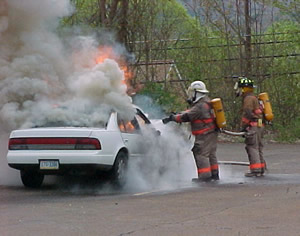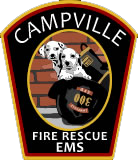
Most people think of structure fires when they think of the fire department, but we are called on to put out any type of fire. Sometimes a car has malfunctioned and has caught fire. Although they may seem to be a relatively benign type of fire, they can be extremely dangerous.
Some of the hazardous associated with a car fire include the fuel in the car. Classic cars carry significant amounts of gasoline, which is extremely flammable. Newer cars pose whole new threats, with hybrid system containing high power electrical systems. The extensive use of airbags pose dangers unto themselves.
And finally, we just never know what might be contained within the car. From the legal transport of gas grill propane cylinders to the illegal transport of dangerous chemicals, the car fire is always treated as a dangerous situation.

